Click the logo above to reach
the ssMaritime FrontPage for News Updates & “Ship of the Month”
With Reuben
Goossens
Maritime Historian, Cruise‘n’Ship
Reviewer, Author & Maritime Lecturer
Please Note: All
ssMaritime and other related maritime/cruise sites are 100% non-commercial and privately
owned. Be assured that I am NOT associated with any shipping or cruise
companies or any travel/cruise agencies or any other organisations! Although
the author has been in the passenger shipping industry since 1960, although is
now retired but having completed around 680 Classic Liners and
Cargo-Passengers Ships features I trust these will continue to provide classic ship
enthusiasts the information the are seeking, but above all a great deal of
pleasure!
--Union Castle Mail Steamship Company--
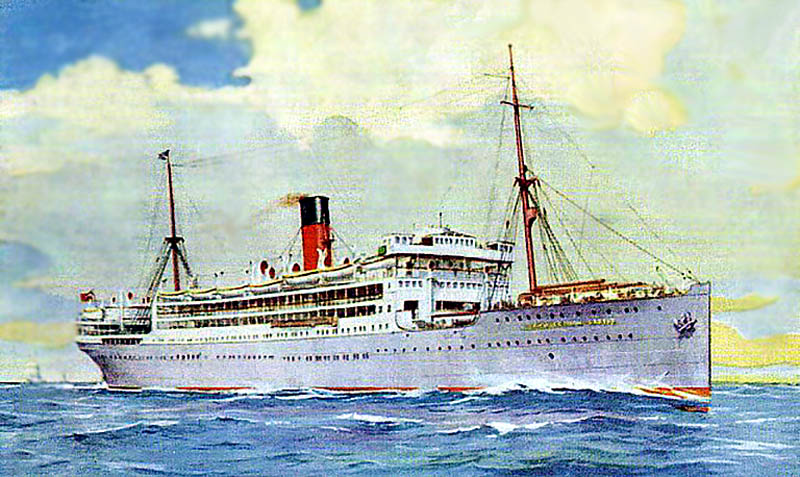
A fine
In April 1912, Royal Mail Line took control of Union-Castle Mail
Steamship Company and signed a ten-year mail contract. With Sir Owen Philipps
voted on the board the first new
RMS Llanstephan Castle
The
As soon as she was delivered the

A fine aerial photograph of the just completed
Photograph
was originally taken by “SkyFotos” but is part of the
author’s private collection since 1966
Whilst on her second voyage and sailing homeward sailing homeward she
received a report which was given to the captain that the German cruiser the
“Konigsberg” was in the vicinity; thus, the ship was turned around,
destination
However during WWI she was used mostly on the
Then in 1917 she was requisitioned for the war effort and she was
refitted as a troopship and on the North Atlantic transporting troops from the
various ports to
Once she was returned to the company the ship was given a refit
restoring her to her original beauty and was made ready to return on the
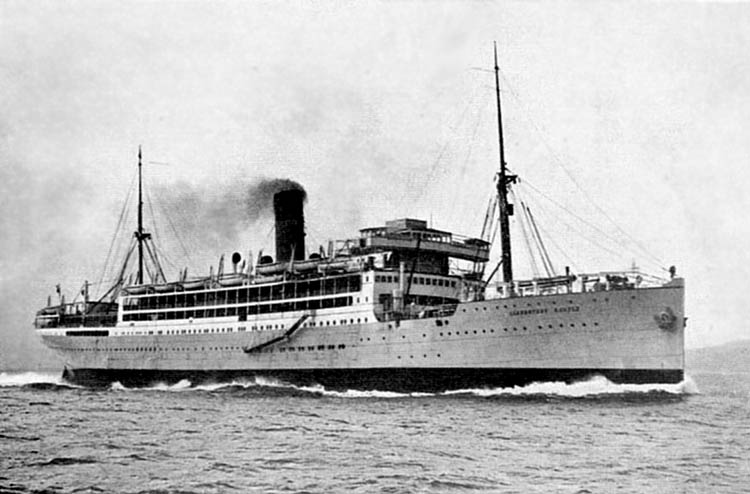
The
Another change took place in 1922 when she was transferred to the
“Around Africa” service, visiting the following ports; Naples or
Genoa, Suez, Aden, Mombasa, Tanga, Dar-es-Salaam, Beira, Lourenco Marques,
Durban and East London, Cape Town returning via West Africa.
In 1938 she received a refit and at the same time she was converted
from coal to oil fuel, saving a considerable amount for the company. She
returned to her duties until the commencement of WWII.
During the war she first operated as a military troop transport ship
for the Ministry of War. However, in August 1940 she transported 300 evacuees
from Liverpool to
After World War II she was returned to Union Castle Line who in 1947
had her refitted and the ship became a two-class liner and she would now
accommodate 234 First Class and 198 Tourist Class passengers. Upon completion
she returned to her pre war Around Africa service, but she only had barely five
more years let in her!
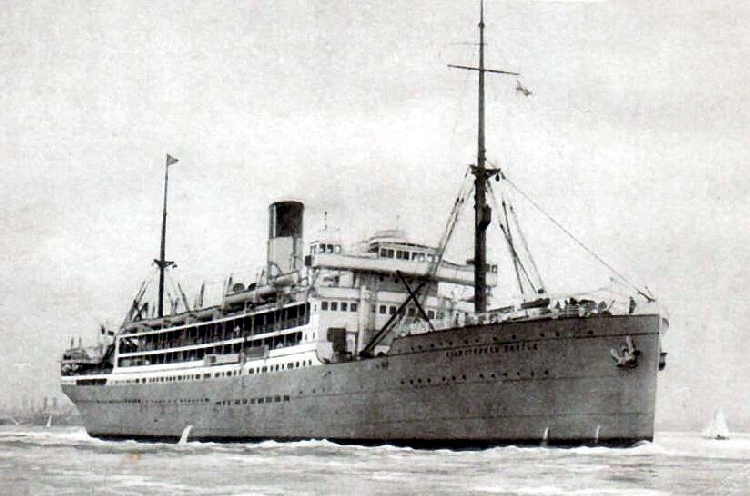
Thus, it was in March 1952 the aging Llanstephan Castle was withdrawn from service and she was sold to the British Iron & Steel Corporation who delivered her to J. Cashmore shipyards at Newport, Monmouthshire in Wales where she was soon broken up, having served both “ Country & Company better than well for a good 38 long years!
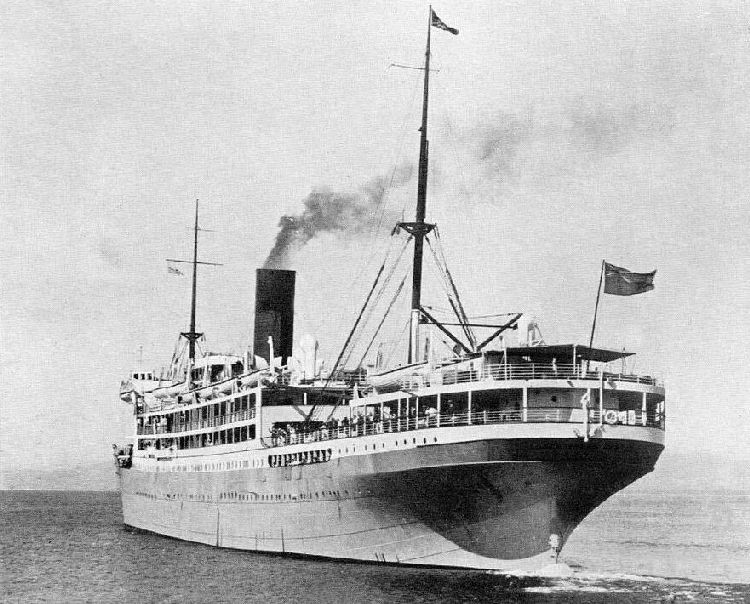
This
is simply a great and wonderful stern view of the
Specifications
–
Built
by:
Yard
#: 494.
Tonnage: 11,293 GRT.
Length: 519ft – 158.3m.
Width: 63.3ft – 19.3m.
Engines: Steam, quadruple-expansion
by the builders.
Screws: Twin – 6,500 IHP
Service
peed: knots
After
1947 refit:
Crew: 250
Visit the Special - RMS
Llanstephan Castle Brochure Page
****************************
RMS Llandovery Castle
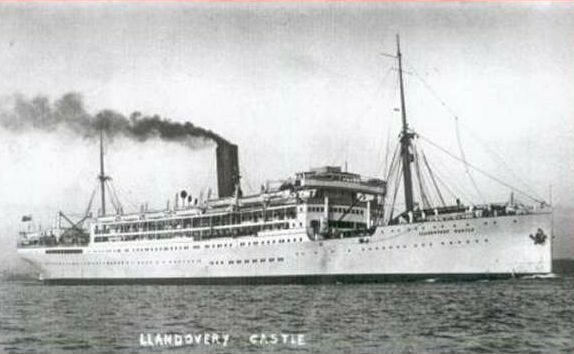
Then due to the
WWI, in 1916 she was commissioned to become a hospital ship and was given the
responsibility of transporting wounded Canadian soldiers from Europe frontline
ports to
A War Tragedy that Should Never Have Happened:
However,
tragically this service did not last very long, for on June 27, 1918, around
2130 / 9.30 PM (Irish time), the HMHS Llandovery Castle was torpedoed by the
German U-Boat 86 and she sunk in the Atlantic Ocean, 116 miles South West of
Fastnet, Ireland.
Considering the
When the
Below I have details
of those who survived, which was provided by one of the survivors, Albert
Victor Record.
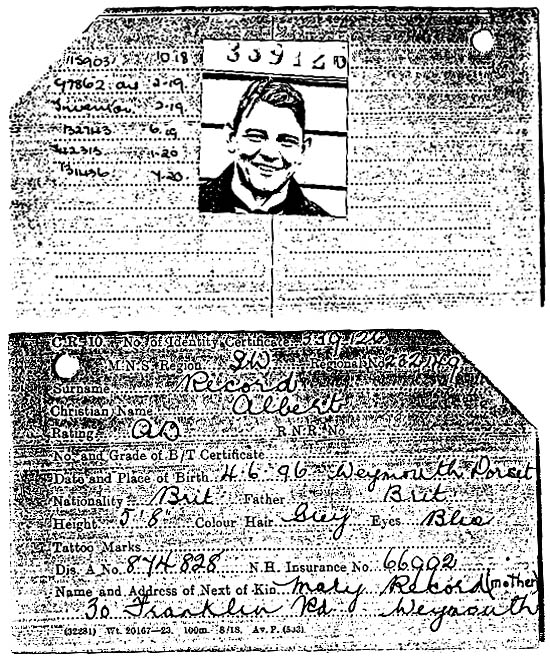
A label that was attached to Albert Victor, Record,
who was the ships “Lamp Trimmer. As the record below testifies
His duties certainly showed the ships times, for
they still had to trim the oil lamps
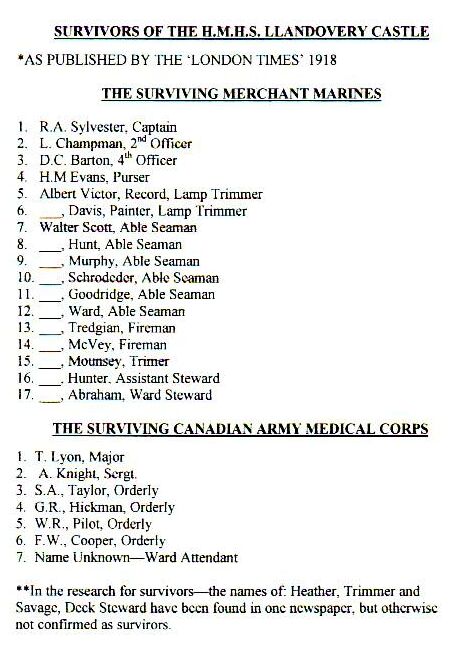
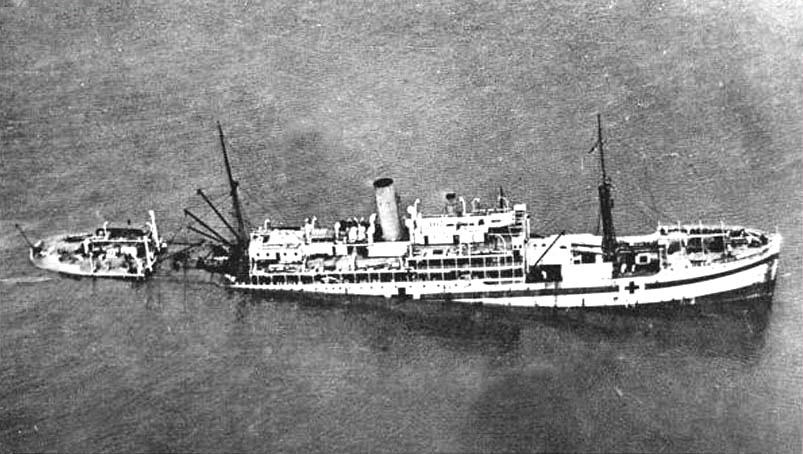
A tragic view of the
In total, 88 Medical Staff as well as 146 crewmembers, thus a total of
234 lives were lost. Thus we now know that these evil Germans managed to slaughter
in cold blood 234 non-combatants, being nurses, medics and crew, how proud they
must have felt? As well as destroying a ship that was clearly marked as being a
Hospital ship, which under all conventions was “Leave well alone!”
Specifications
-
Built
by: Barclay Curle
& Company
Yard
#: 504
Tonnage: 11,423 GRT
Length: 517ft – 157.6m
Width: 63.3ft – 19.3m
Engines: Steam, quadruple-expansion
by the builders
Screws: Twin – 6,500 IHP
Service
peed: knots
Passengers: 213 First Class, 116 Second
Class, and 100 Third Class
Crew: 250
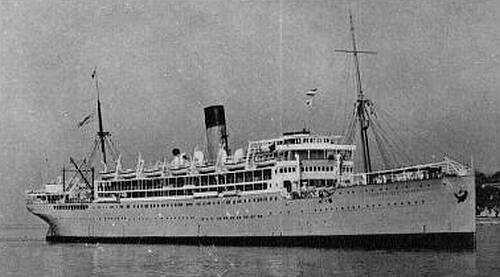
“Blue
Water Liners sailing to the distant shores.
I watched them come, I watched them go and I watched them die.”
****************************
Visit our ssMaritime
Main INDEX
Where you will discover around 680 Classic Passenger
& Passenger-Cargo Liners!
ssMaritime.com & ssMaritime.net
Where the ships of the past make history & the 1914 built MV Doulos Story
Please Note: ssmaritime
and associated sites are 100% non-commercial and the author does not seek
funding or favours and never have and never will.
Photographs on ssmaritime and associate pages are either by the author or from the author’s
private collection. In addition there are some images and photographs that have
been provided by Shipping Companies or private photographers or collectors.
Credit is given to all contributors, however, there are some photographs
provided to me without details regarding the photographer or owner concerned.
Therefore, I hereby invite if owners of these images would be so kind to make
them-selves known to me (my email address can be found at the bottom of the
page on www.ssmaritime.com), in order
that due credit may be given.
ssMaritime is owned & © Copyright by Reuben
Goossens - All Rights Reserved
